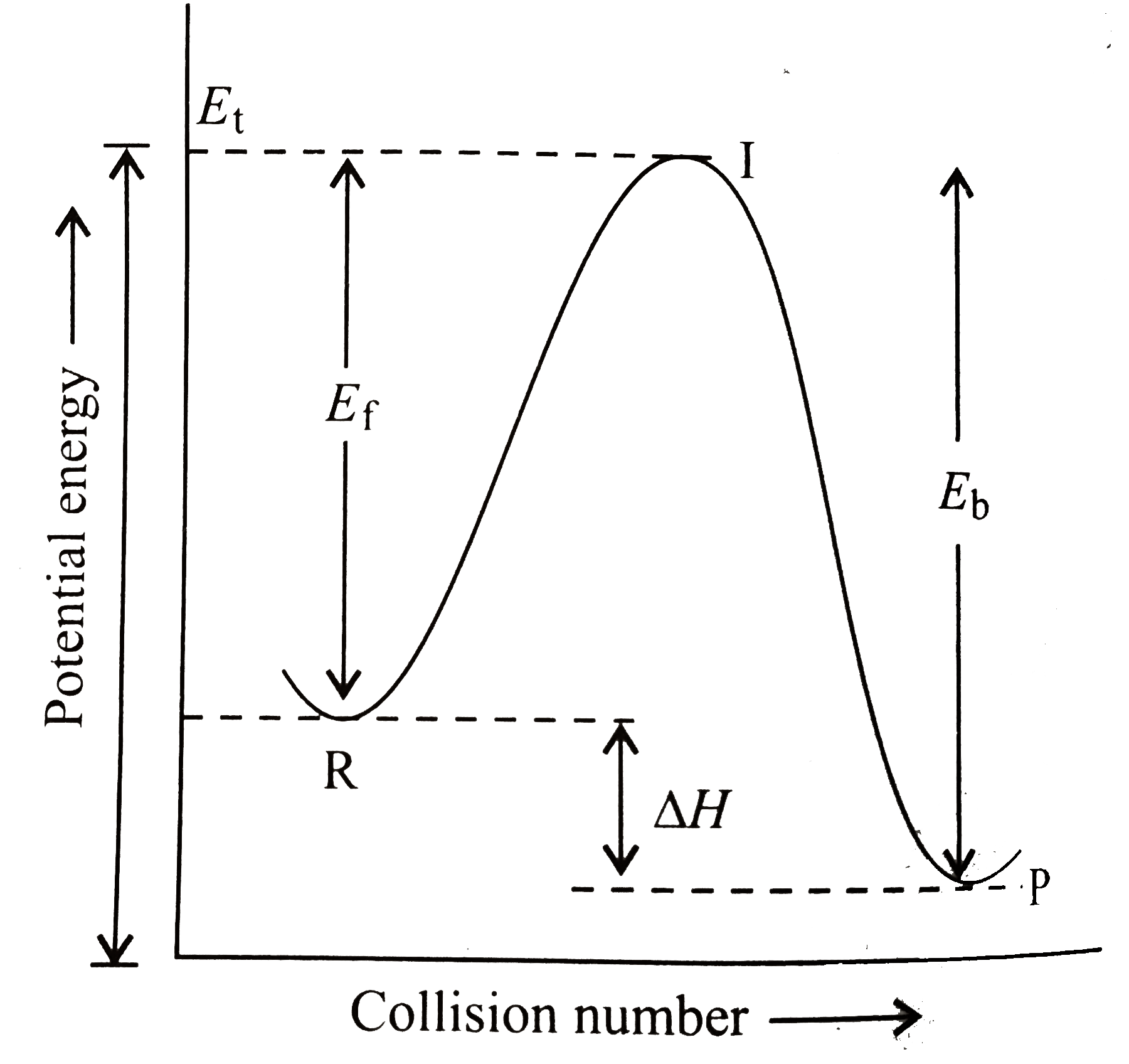The activation energies for forward and backward reactions are EfandEb respectively. If the reaction is exothermic then which is true regarding relation of activation energies?
Et>Eb
Ef<Eb
EF=Eb
There is no direct relation between EtandEb
The correct Answer is:B
To solve the question regarding the relationship between the activation energies for forward and backward reactions in an exothermic reaction, we can follow these steps:
1. Understand the Definitions:
- Activation Energy (E_f): The energy required to initiate the forward reaction.
- Activation Energy (E_b): The energy required to initiate the backward reaction.
- Exothermic Reaction: A reaction that releases energy, resulting in products that have lower energy than the reactants.
2. Visualize the Energy Profile:
- Draw a potential energy diagram for an exothermic reaction. The y-axis represents potential energy, and the x-axis represents the reaction coordinate.
- Mark the energy levels of reactants and products. The reactants will be at a higher energy level than the products.
3. Identify the Transition State:
- The peak of the energy profile represents the transition state, which is the highest energy point along the reaction pathway.
4. Calculate the Activation Energies:
- The activation energy for the forward reaction (E_f) is the energy difference between the reactants and the transition state.
- The activation energy for the backward reaction (E_b) is the energy difference between the products and the transition state.
5. Establish the Relationship:
- Since the reaction is exothermic, the energy difference (ΔH) between the reactants and products is negative (ΔH = E_products - E_reactants).
- The relationship can be expressed as:
Eb=Ef+|ΔH|
- This indicates that the activation energy for the backward reaction (E_b) is greater than that for the forward reaction (E_f).
6. Conclusion:
- Therefore, for an exothermic reaction, the relationship between the activation energies is:
Eb>Ef
- This means that the activation energy for the backward reaction is greater than that for the forward reaction.
Final Answer:
In an exothermic reaction, the activation energy for the backward reaction (E_b) is greater than the activation energy for the forward reaction (E_f). Thus, the correct relation is:
Eb>Ef
- Activation Energy (E_f): The energy required to initiate the forward reaction.
- Activation Energy (E_b): The energy required to initiate the backward reaction.
- Exothermic Reaction: A reaction that releases energy, resulting in products that have lower energy than the reactants.
- Draw a potential energy diagram for an exothermic reaction. The y-axis represents potential energy, and the x-axis represents the reaction coordinate.
- Mark the energy levels of reactants and products. The reactants will be at a higher energy level than the products.
- The peak of the energy profile represents the transition state, which is the highest energy point along the reaction pathway.
- The activation energy for the forward reaction (E_f) is the energy difference between the reactants and the transition state.
- The activation energy for the backward reaction (E_b) is the energy difference between the products and the transition state.
- Since the reaction is exothermic, the energy difference (ΔH) between the reactants and products is negative (ΔH = E_products - E_reactants).
- The relationship can be expressed as:
Eb=Ef+|ΔH|
- This indicates that the activation energy for the backward reaction (E_b) is greater than that for the forward reaction (E_f).
- Therefore, for an exothermic reaction, the relationship between the activation energies is:
Eb>Ef
- This means that the activation energy for the backward reaction is greater than that for the forward reaction.
In an exothermic reaction, the activation energy for the backward reaction (E_b) is greater than the activation energy for the forward reaction (E_f). Thus, the correct relation is:
Eb>Ef
Similar Questions
If the activation energies of the forward and backward reactions of a reversible reaction are Ea(f) and Ea(b), respectively. The ΔE of the reaction is ………..
View SolutionThe activation energies of the forward and backward reactions in the case of a chemical reaction are 30.5 and 45.4kJ/mol respectively. The reaction is:
View Solution
Knowledge Check
When the activation energies of the forward and backward reactions are equal, then :
AΔU=0,ΔS=0BΔU=0,ΔG=0CΔS=0,ΔG=0DOnly ΔU=0If Ef and Er are the activation energies of forward and backward reactions and the reaction is known to be exothermic, then
AEf>ErBEf<ErCEf=ErDNo relation can be given between Ef and ErThe activation energies for forward and backward reactions in a chemical reaction are 30.5 and 45.4 kJ mol−1 respectively. The reaction is
AexotherinicBendotherinicCneither exothermic nor endothermicDindependent of temperature.
For the reaction, for which the activation energies for forward and backward reactions are same, then:
View SolutionActivation energy of forward and backward process of reaction are 60 kJ and 40 kJ mol−1 respectively . Which of the following are true the reaction ?
View SolutionThe reaction A→C has activation energy for the forward and the backward reaction has 25 kJ and 32 KJ respectively. The ΔH for the reaction is
View SolutionIf the activation energy of both the forward and the backward reactions are equal, then change in internal energy is
View SolutionA colliison between reactant molecules must occur with a certain minimum energy before it is effective in yielding Product molecules. This minimum energy is called activation energy Ea Large the value of activation energy, smaller the value of rate constant k. Larger is the value of activation energy, greater is the effect of temperature rise on rate constant k.

Ef= Activation energy of forward reaction
Eb= Activation energy of backward reaction
ΔH=Ef−Eb
Ef= threshold energy
In a hypothetical reaction A→B, the activation energies for the forward and backward reactions are 15 and 9kJmol−1, respectively. The potential energy of A is 10kJmol−1. Which of the following is wrong?
View Solution